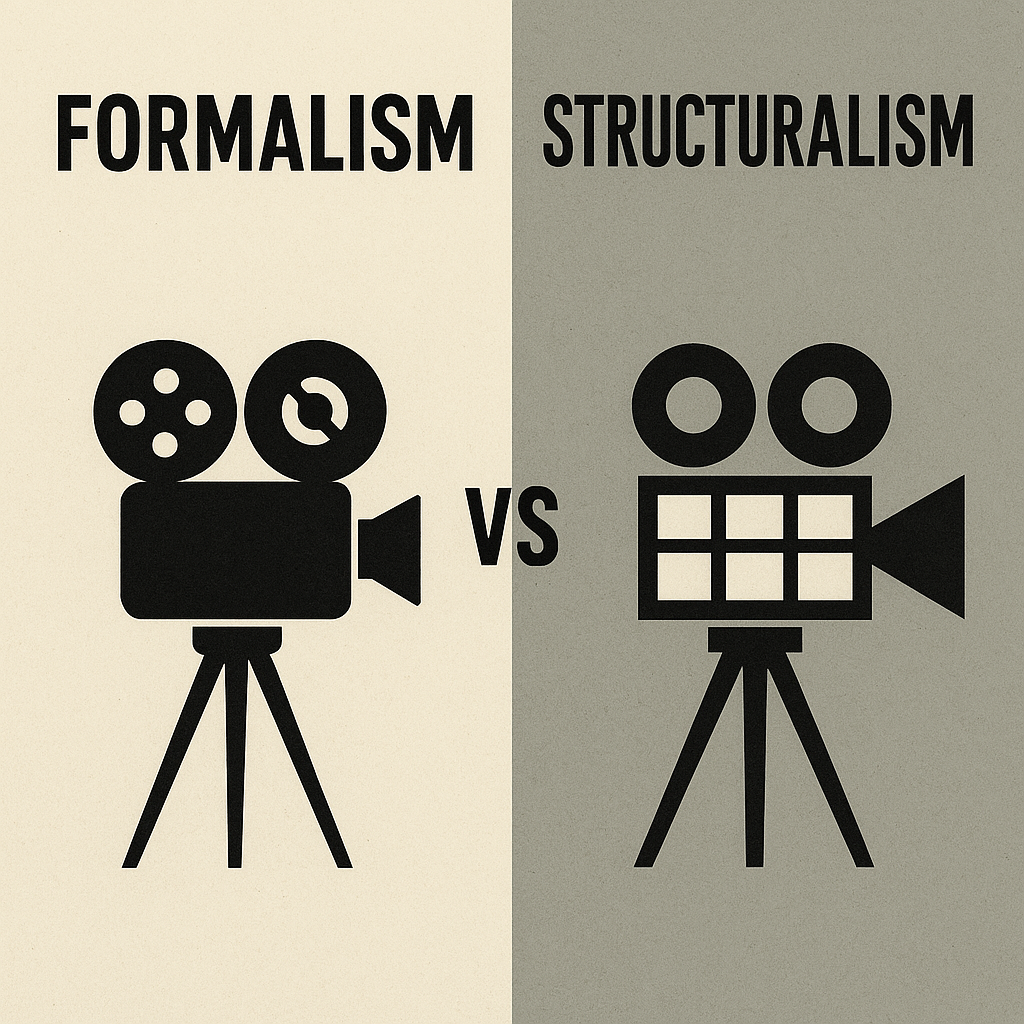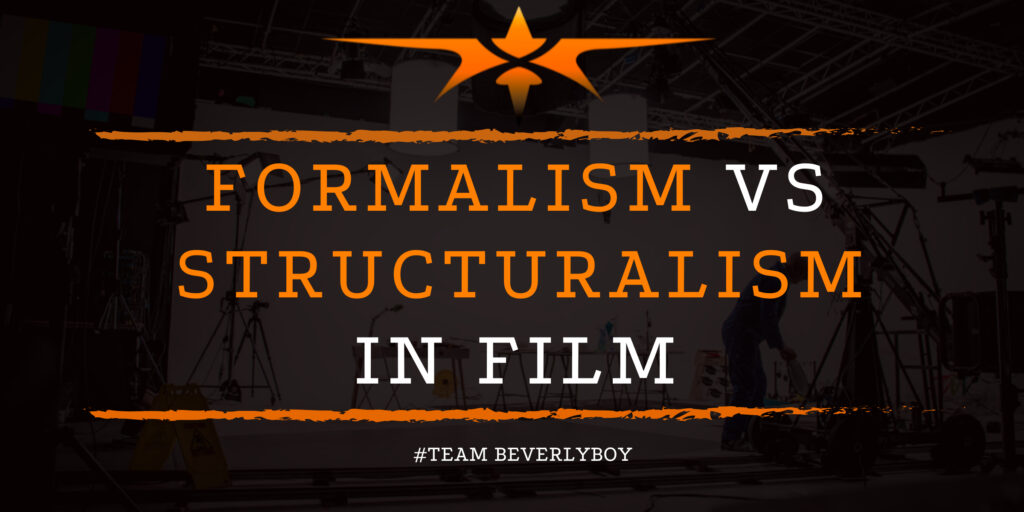Formalism vs Structuralism in Film
If you’ve been diving into film theory, you’ve likely come across the terms formalism and structuralism—two powerful lenses through which film can be analyzed, interpreted, and understood. But what’s the difference between the two? And how does each approach impact the way we create or experience cinema?
Whether you’re a student, filmmaker, or a curious movie buff, understanding formalism vs structuralism in film will sharpen your analytical tools and deepen your appreciation for how films are crafted—not just for what they say, but how they say it.

What is Formalism in Film?
Formalism in film focuses on style, technique, and artistic choices over narrative realism. It highlights the form of a film—elements like editing, cinematography, sound, and visual composition—as the main sources of meaning.
Rather than trying to mirror reality, formalist films embrace symbolism, abstraction, and manipulation of time and space. Directors use visual and audio cues to create emotion, mood, and metaphor. The audience is often reminded that what they are watching is a constructed artistic experience.
Common characteristics of formalist films:
- Emphasis on color, lighting, and visual design
- Use of non-linear storytelling or montage
- Strong focus on editing rhythms and transitions
- Intentionally stylized performances or sets
Think of the striking symmetry of Wes Anderson, the visual experimentation of Sergei Eisenstein, or the dream-like style of Stanley Kubrick—these are all deeply rooted in formalist principles.
What is Structuralism in Film?
Structuralism, on the other hand, is all about understanding film as a system of signs. It draws from linguistics and anthropology, aiming to uncover the underlying structures that govern storytelling, character archetypes, and genre conventions.
Structuralist theorists believe that individual films can be studied like language—broken down into patterns, symbols, and recurring elements that reflect larger cultural and social codes.
Key concepts in structuralism:
- Binary oppositions (good vs. evil, man vs. nature)
- Narrative structures (hero’s journey, three-act format)
- Genre conventions (tropes, formulas, repeated symbols)
- Focus on the viewer’s role in decoding meaning
A structuralist reading of a film looks beyond the visuals to explore the universal ideas, myths, or rules that shape the narrative. For example, analyzing “Star Wars” as a modern myth with classic archetypes (hero, mentor, villain) is a structuralist approach.
Formalism vs Structuralism: What’s the Difference?
While both formalism and structuralism provide tools to interpret and analyze films, their focus and methods differ significantly:
Aspect | Formalism | Structuralism |
Main focus | Style, technique, and visual construction | Structure, patterns, and narrative systems |
View of film | A work of art to be analyzed for aesthetic choices | A text made up of codes and signs to be decoded |
Emphasis | Visuals, sound, editing, mood | Language, symbols, character roles, genre norms |
Audience experience | Emotional and sensory engagement through form | Intellectual analysis of underlying structures and meaning |
Creators analyzed | Directors, cinematographers, editors | Writers, theorists, mythologists, linguists |
In short, formalism is about how a story is told, while structuralism is about what structures shape the story and how the audience interprets it.
Why These Theories Matter to Filmmakers
Both formalism and structuralism can elevate your work and help you become more intentional in your storytelling.
- A formalist filmmaker will experiment with visuals, sounds, and editing to evoke a specific emotional response.
- A structuralist-minded creator might explore universal themes, mythic journeys, or challenge genre conventions through symbolic storytelling.
For instance, a New York production team crafting a documentary might apply structuralist techniques to reveal societal structures, while a Los Angeles-based director working on a music video may lean into formalist style to create a visually rich experience with minimal narrative.
Understanding these perspectives empowers you to mix, match, or break the rules—resulting in films that are either deeply stylized, richly symbolic, or a blend of both.
In Summary
When comparing formalism vs structuralism in film, it’s not about which is better—but rather, which approach serves your story. Formalism asks how visual and technical choices create meaning, while structuralism digs into the frameworks and systems beneath the surface.
Whether you’re analyzing classic cinema or working on your next film, understanding these theories will give you a sharper eye and deeper insight into how stories work—and why they move us the way they do.


